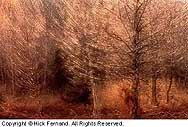
My photography is, first-of-all, a history of love between a photographer and the Nature that surrounds him. For more than thirty years, I’ve been impassioned by my photographs. Being an engineer with a nervous, active life, for personal balance I have always needed a loophole I can use to loosen the pressure. Photography has allowed me to fill this need by inviting me to dream, to forget my concerns for some hours and, thus, to recharge my batteries. By often strolling through Nature, with or without a camera, I have learned to look, to observe this wonderful world that surrounds us and that is there, gratuitously, at the disposal of all who wish it.
The spectacle offered by Nature is permanent and different each day. One has only to observe to know that each day, each instant, is unique and will never be reproduced. For example, if you lie down beneath the sky, what you see will be different each day, either by its colors, its clouds, or the presence of haze. In the spring, in the tiny space of twenty-four hours, there are significant changes in the vegetation—in the dimensions and colors of the leaves, the birth of flowers, more long branches or ones that lean more.
It is necessary to approach closely in order to observe the beauty and complexity of buds, to really see flowers, to caress tree barks, to inhale scents, to listen to the murmur of the wind in the foliage, and to marvel at all these sensations that restore us. To listen to the birds, to accept rain on your face, to be caressed by the wind in your hair, to briefly enter into communion with this wonderful environment is to garner grace. I won’t deny that in some rare instances the spectacle is so beautiful that I return in a trance of admiration! And, if in this instant I have my camera, I assure you the images I capture will be wonderful.
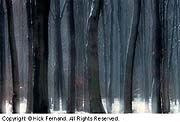
Each person will perceive the environment differently through emotions unique to each. That means that even when they’re both witnessing the same scene and working to express the reactions they feel, two photographers won’t create the same images. Of course, transmitting emotion in images is always difficult. Only after long hours of step-by-step work and repeated tests with pitiless criticism will the images you produce be a reflection of live reality to the breadth of its personality.
During exhibitions I’ve been asked, “Are the emotions I feel when I look at your photograph what you felt when you took it?” I have always received this question as a present. My work is bearing fruit.
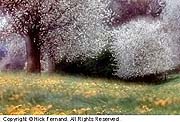
Because I’ve always wished that my images would transcend a small part of myself, I’ve limited myself to working in a zone of approximately fifty kilometers around my domicile. Why? For one reason, I’ve had little opportunity to travel. However, my region is far from being a natural park.
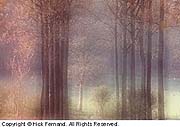
It’s often extremely difficult to center a subject in a picture without including a disruptive element such as a house, an electrical line, a road, etc. But, if you’re forced to exploit to the maximum that which surrounds you, you’ll find small corners of paradise where you’ll be able to exert your art. I believe it’s essential to familiarize yourself with a place before photographing it. When we go to an exotic country for the first time, in our disorientation we find that everything is beautiful. There lies the danger. Just because a scene is new to us doesn’t mean it’s a good subject! The most expressive photography has been realized by artists who live in the places they’re attempting to capture, or at least have been there for several months, perhaps several years. There is no miracle in their insightful vision.
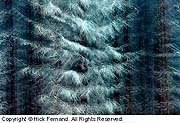
Can a photographer be inspired by someone else’s work and still create a personal style? I think the answer is yes, as long as your photographic personality is sufficiently strong to enable you to gradually depart from your model so you can dig your own path. To imitate is not sufficient, but you can draw elements from the work of another photographer into the construction of your own unique approach. In my landscape photography, I have personally been influenced by the work of Andre Martin, in which the landscapes are realized with a 500 mm mirror telephoto lens. After seeing his work, I bought this lens. However, it has taken me a year to learn to use it well to create quality images. In the meantime, I hesitated many times, tempted to sell it. But, by dint of tenacity, I was finally rewarded. I once read, “The artist who succeeds is not the one who has the most talent, but the one who works the most.”
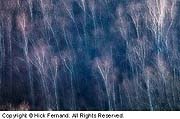
To create an atmosphere with a certain romanticism in my images, I apply the technique of soft focus. The quality of the light is essential, as everyone knows. Think of the dramatic lights that precede a storm, the magical light after the passage of the shower, and also, the strange light that reigns after you lie down in the sun. As you will observe, the most beautiful lights are the most fugitive, and they change all the time. It’s necessary to work very fast to seize them. That means you won’t have time to think about the technical elements of the shoot.
Yes, technique is indispensable. It’s necessary to learn it, possess it, and forget it. It’s like the experience you have when you drive your car. You don’t think consciously, ” I have to push my right foot on the brake.” Braking is a reflex action you’ve acquired. The same thing must happen in photography. The technique has to be assimilated and forgotten. You must concentrate on expressing your vision. Winning moments are so ephemeral that if you found it necessary to stop to think about technical aspects, you’d miss the moment.
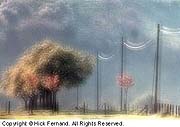
With the subjects I seek, I can’t plan my viewpoint ahead of time. I can’t anticipate when the light will be magical, which means I find it necessary to return over and over to the same place. Chance certainly plays a part in success, but as a woman, Nature offers her charms only to the most patient and assiduous of her admirers.
In practice, I keep my backpack and tripod in a conspicuous place, always ready. When I take a photograph, I lock the camera’s mirror, or I use a monopod to prevent vibrations. I find it essential to use a tripod with a telephoto lens. When I work outdoors, I often avoid including skies, because they are rarely beautiful, and they pose a problem of luminosity and, therefore, contrast. On the other hand, in black-and-white, the sky is not lost because the film offers better contrast, so I use a greater angle.
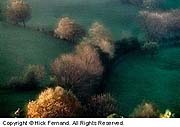
From slides, I have an internegative made that will serve for printing. Indeed, to reproduce skies with subtle colors, I can’t trust my work to an outside lab. Only the photographer can judge how satisfactory a print is and will be willing to do it over until it’s right. I’m sometimes surprised to observe that some viewpoints are prettier in slides and that others are prettier in prints Luminous transparency effects, for example, are better rendered in print. On a roll of film with thirty-six exposures, if I have even one quality image, I’m a happy man. The selection process must be ruthless. For the exposure, I’m more confident relying on my judgement based on my experience than relying on the camera’s metering. If conditions of light are delicate, I bracket. The best image is not necessarily the one with the best exposure. I’m sometimes surprised. The finished product is more a result of intuition and luck than of technical expertise.

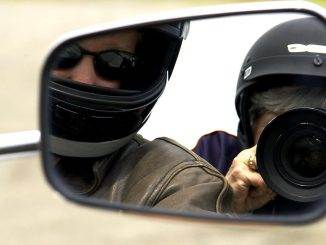
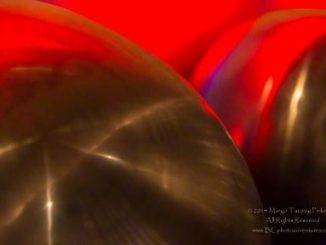

Leave a Reply